Solid-state storage is gaining popularity in computing applications, especially in industrial environments. Companies like Core Systems are increasingly incorporating solid-state drives (SSDs) into their devices, recognising the significant advantages they offer over traditional storage solutions. SSDs have quickly become the preferred choice in industrial settings, valued for their superior performance and reliability.
This article explores the key benefits of industrial-grade SSDs, focusing on their speed, durability, and energy efficiency.
What exactly is a solid-state drive?
A solid-state drive (SSD) is a storage device that uses integrated circuits to store data permanently, typically through flash memory. Unlike traditional hard drives that rely on spinning discs, SSDs have no moving parts, which makes them faster. They are used as secondary storage in a computer's storage and are known for enhancing system performance. Upgrading to an SSD is one of the most effective ways to boost a computer's speed and responsiveness.
Types of SSDs:
Several types of SSDs are available today, each with different connectivity interfaces, which determine how they connect to a computer or server.
-
SATA (Serial Advanced Technology Attachment)
SATA was the first interface used with SSDs and is the most common for hard drives and storage devices. It offers speeds of up to 600 MB/s and is widely compatible with most laptops and desktops, making it very popular. SATA also comes in a smaller version called mini-SATA (mSATA). While SATA is the slowest of the SSD types, it still transfers data up to five times faster than traditional hard drives.
-
NVMe (Non-Volatile Memory Express)
NVMe is an interface designed for SSDs to handle the high-speed data transfer that newer storage technologies demand. Unlike SATA, originally made for hard drives, NVMe can take full advantage of the faster speeds that modern storage devices offer, providing much quicker data access and transfer.
-
PCIe Connector
SSDs can also be classified by the connector type, which affects data transfer speeds. The PCIe (Peripheral Component Interconnect Express) connector is the same one used for high-performance graphics cards and offers the fastest data processing and transfer speeds when used with NVMe SSDs. This makes PCIe-connected NVMe SSDs the top choice for those needing the highest performance.
What exactly is an industrial SSD?
For most embedded systems, an industrial SSD is the typical storage solution. SSDs are available in various sizes, including 2.5" and others. Industrial SSDs are ideal if you need a reliable, high-performance flash storage device. They perform better and last longer than regular SSDs, so they are used for storage in essential areas like transportation and industrial control systems.
How do SSDs Works?
Solid-state storage technology stores data using semiconductor memory cells rather than the spinning disks used in traditional hard drives. The most common form of solid-state storage is the Solid-State Drive (SSD), which uses NAND flash memory to retain data even without power. SSDs are faster, more durable, and consume less energy than traditional hard drives. Key components include:
- Memory cell arrays that store data.
- Memory controllers that manage data flow.
- Interfaces like SATA or PCIe that connect the SSD to the computer.
Data on an SSD is written and erased through a process called the Program/Erase (P/E) cycle. After several thousand cycles, the memory cells may start to decrease. SSDs come in different types based on the number of bits stored per memory cell, including Single-Level Cell (SLC) for maximum speed and durability, Multi-Level Cell (MLC) for a balance of performance and cost, Triple-Level Cell (TLC) for higher storage capacity, and Quad-Level Cell (QLC) for even greater capacity at a lower price but with reduced longevity.
What's the difference between an HDD and an SSD?
HDDs and SSDs are both storage devices, but they operate differently. HDDs use mechanical spinning discs and a moving read/write head to store and access data. In contrast, SSDs use memory chips to store data, allowing faster, quieter, and more durable performance. SSDs are also smaller and consume less energy, but HDDs are generally cheaper and offer larger storage capacities with easier data recovery if damaged.
6 Benefits of SSDs in Industrial Computers
-
Speed
SSDs are significantly faster than HDDs. They can read data 10 times faster and write data 20 times faster than HDDs. While HDDs copy data at speeds between 30 and 150 MB/s, SSDs achieve speeds of 500 MB/s. This speed results in faster boot times, quicker application and file loading, and more efficient data transmission.
-
Energy Efficiency
SSDs consume less power than HDDs, which rely on mechanical operations that drain energy. This makes SSDs more energy-efficient, extending device battery life and reducing operational costs. For industries where power efficiency is vital, SSDs are a better choice.
-
No Overheating
SSDs generate less heat than HDDs, they are more heat-resistant, and help maintain system performance, especially in industrial environments where temperature control is crucial.
-
Durability
SSDs can handle vibration and physical shocks. SSDs are a more dependable choice in challenging industrial conditions, offering greater longevity and stability. They also operate quietly, which is an added advantage in noise-sensitive environments.
-
Increased Power and Speed
SSDs offer faster data access because they don’t rely on mechanical parts, making them ideal for industrial and military applications where rapid data recovery is necessary. Their power efficiency also makes them suitable for battery-powered devices, extending battery life and improving overall performance.
-
Compact Design for Maximum Strength
SSDs are more compact than traditional hard drives, saving space in devices where size matters. Their smaller size also helps reduce heat generation, making them less overheating.
In conclusion, Solid-state drives (SSDs) are becoming popular in industrial settings because they are faster, more durable, and use less energy than traditional hard drives. Unlike hard drives with moving parts, SSDs use flash memory, which makes them quicker and more reliable. There are different types of SSDs, like SATA, NVMe, and PCIe, each offering various speeds and connectivity. Industrial SSDs are especially good for tough conditions because they use less power, produce less heat, and can handle physical shocks, making them ideal for critical applications in industrial control systems and transportation.
Find Your Embedded PC Now!
Join 6.7 million buyers who’ve found their ideal Embedded Computer with our comparison tool. We help you compare prices, features, and full costs like maintenance. Plus, check out supplier reviews to make the best decision. Compare now and find the right fit for your business! Get Quotes for Industrial Embedded Computers!
FAQ:
Q: What is a solid-state drive (SSD)?
A: An SSD is a storage device that uses integrated circuits to store data, typically through NAND flash memory. Unlike traditional hard drives that use spinning discs, SSDs have no moving parts, resulting in faster performance and increased durability.
Q: How does an SSD differ from a hard disc drive (HDD)?
A: SSDs use memory chips to store data, which allows for faster access times, reduced power consumption, and greater durability compared to HDDs, which rely on mechanical spinning discs and read/write heads.

.jpg)



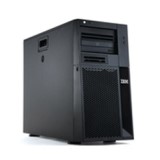
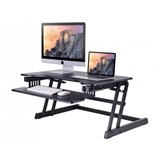


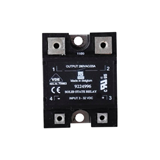
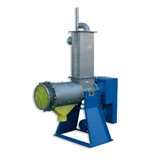
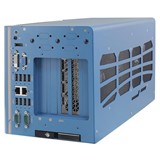
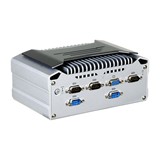

(1)-205x205.jpg)
(1)-205x205.jpg)